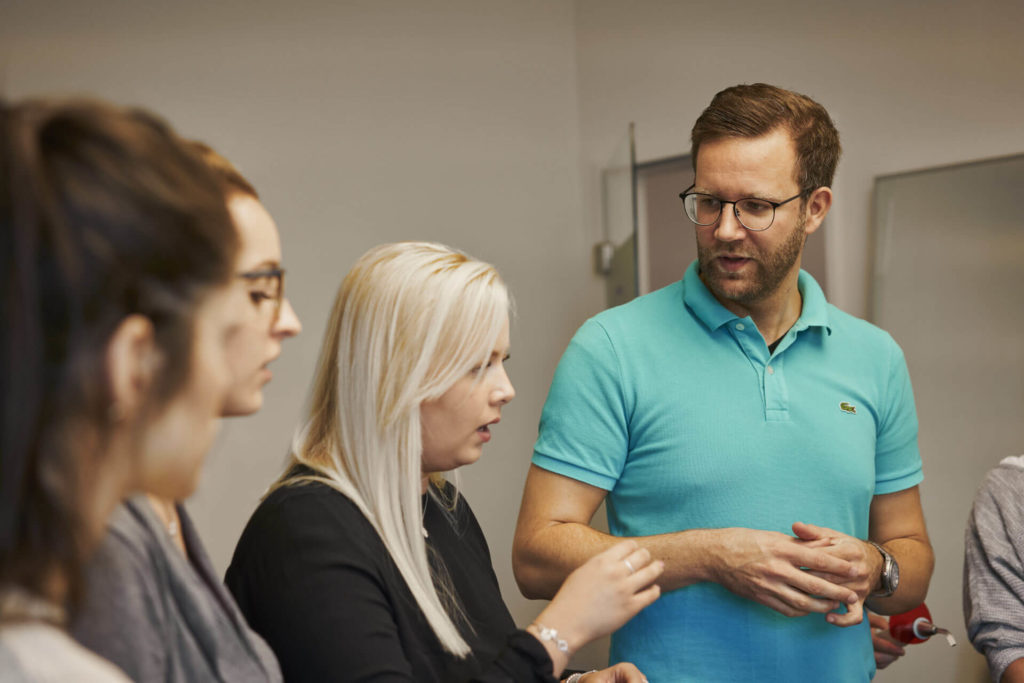The desire for aesthetic appeal is slowly but surely cruising its way into the dental market with more and more individuals seeking out cosmetically sound alternatives for correcting malocclusion. The clear aligner trenches have been critical in swallowing patient after patient in today’s progressively startling orthodontic path and very few are now willing to suffer through the experience of getting fixed appliances to fix their malaligned teeth.
Due to these high aesthetic demands, the newest and most cutting-edge technology has seen a tremendous output in today’s orthodontic climate. And clear aligner therapy is taking centre stage.
Traditionally dentists would partner or contract with a third-party company to bring clear aligner treatments to fruition. In these instances, the dentist would need more machinery and equipment support, therefore, outsourcing would be the only way they could deliver clear aligners to their patients.
However, outsourcing has its own sets of drawbacks both for the client and the dentist. It could take well over a month to produce and deliver an aligner set (not including adjustments) and the provider would also require a substantial service fee, eliminating potential profit margins. But with 3D printing solutions becoming readily available to private practices, orthodontists are now given the option to fabricate aligners in the comfort of their own offices.
Admittedly, there is no cookie-cutter approach: both options bear their own challenges and benefits. It is up to the orthodontist to examine his choices and determine which one would best fit the facility and available resources.
Outsourcing to a lab: Pros and cons
Pros:
There is a reason why outsourcing clear aligner design and fabrication has been the norm to date. While it is true that a third-party company can take longer to deliver the clear aligners to the dentist, it could also depend on the type of service provider you choose. For instance, independent dental labs can have a faster turnaround time than name-brand facilities. What can easily take six to eight weeks to finish with a brand like Invisalign®, it may take only two weeks when partnered with an independent dental lab.
Furthermore, outsourcing also means that you do not have to directly invest in materials, training, and equipment. No upfront investment also means that you are not liable for maintenance costs, saving you plenty of dollars. Dentists may also be offered a wide choice of technologies through these outsourcing companies, allowing them to propel the production rates of both quality and quantity.
Cons:
As with any viable option, the act of outsourcing also comes with a number of hardships. Subcontracting an independent lab to do your “grunt work” also means that these companies can cut into your profits. A middle-man fee will be mandatory to get your services delivered, that too at a slower-than-otherwise rate. A two-week turnaround time may not seem as bad but is nothing compared to same-day service enabled by 3D printing.
A slower turnaround time can also interfere with periodic checkups of the patients with orthodontists. Say a set of aligners do not fit properly for the patient’s teeth or has not shown the ideal amount of progress as planned. In such a case, the treatment will be required to be adjusted and new aligners to be ordered. Since lab turnaround times are slow, it can add weeks for every adjustment which can ultimately lengthen the treatment time by several weeks or even months.
3D printing: Pros and cons
Pros:
3D printing has become an integral part of the orthodontic workspace. Not only does it allow private practices to validate designs and fabricate clear aligners quicker but also allows dentists to perform functional tests in real-time. By 3D printing aligners in the office, the dentist is able to obtain quick turnaround times and faster iterations, making it a brilliant investment.
Once the dentist has acquired the operating equipment and training, they can meet patient treatment demands easily with “on-demand production”. Designs can be tweaked as often as may be necessary and the patient will not have to incur shipping and middleman costs that would otherwise be associated with outsourcing.
Cons:
The dentist has to undergo a certain level of training for 3D printing expertise. When it comes to service bureaus that offer aligner fabrications on the dentist’s behalf, they are highly trained in this essential skill. Additionally, most bureaus may also offer design and finishing services, both of which require significant data presentation and post-processing. There is definitely a learning curve when it comes to in-house aligner services.
Most orthodontists are now switching to in-house 3D printing due to its accelerated turnaround, increased profitability, and enhanced patient satisfaction. If dentists can overcome the training requirements of 3D printing, it can work wonders for their dental practice and their patients.

